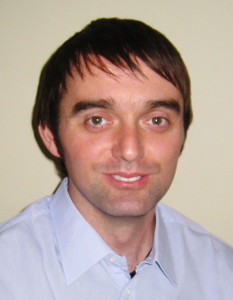Jason England
Nanyang Assistant Professor, Division of Chemistry and Biological Chemistry
School of Physical and Mathematical Sciences, Nanyang Technological University
| Education: | PhD (Chemistry) Imperial College London 2005; MSc (Chemistry) Imperial College London 2001 |
| Phone: | (+65) 6592 2553 |
| Email: | jengland@ntu.edu.sg |
| Office: | SPMS-CBC-04-03 |
Research Interests
Bioinspired activation of small molecules and inert X-H bonds. More specifically, at present we seek to develop first-row late transition metal complexes able to (1) activate O2 for catalytic oxidation of unactivated C-H bonds, thereby allowing more straightforward synthesis of a wide range of organic molecules; (2) promote efficient and selective reduction of O2 to water (ORR), which is key to the function of fuel cells; and (3) electrocatalytically oxidize H2O to O2 in an efficient manner, which is pivotal to the development of photovoltaic cells designed to harvest and store solar energy in chemical form.

Nature is able to catalyze all of the aforementioned chemical transformations in a highly efficient manner, and does so under ambient conditions using enzymes containing highly abundant first-row transition metals. Being able to reproduce the general function of these enzymes using small molecules would be highly desirable, and that is what our research aims to achieve. Rational design of such synthetic catalysts necessitates development of an understanding of how the reactivity of first-row transition metal complexes relates to their electronic and topological properties. This can be achieved via detailed mechanistic investigations, involving chemical kinetics and thorough spectroscopic characterization of reaction intermediates, augmented by computational studies.
Selected Publications
- An Ultra-Stable Oxoiron(IV) Complex and Its Blue Conjugate Base. J. England; J. O. Bigelow; K. M. Van Heuvelen; E. R. Farquhar; M. Martinho; K. K. Meier; J. R. Frisch; E. Münck; L. Que, Jr. Chem. Sci., 2014, 5, 1204.
- Electronic Structures of the Electron Transfer Series [M(bpy)3]n, [M(tpy)2]n, and [Fe(tbpy)3]n (M = Fe, Ru; n = 3+, 2+, 1+, 0, 1-): A Mössbauer Spectroscopic and DFT Study. J. England; C. C. Scarborough; T. Weyhermüller; S. Sproules; K. Wieghardt Eur. J. Inorg. Chem., 2012, 4605.
- A More Reactive Trigonal Bipyramidal High-Spin Oxoiron(IV) Complex With a cis-Labile Site. J. England; Y. Guo; K. M. Van Heuvelen; M. A. Cranswick; G. T. Rohde; E. L. Bominaar; E. Münck; L. Que, Jr. J. Am. Chem. Soc., 2011, 133, 11880.
- The Crystal Structure of a High-Spin Oxoiron(IV) Complex and Characterization of Its Self-Decay Pathway. J. England; Y. Guo; E. R. Farquhar; V. G. Young, Jr.; E. Münck; L. Que, Jr. J. Am. Chem. Soc., 2010, 132, 8635.
- A Synthetic High-Spin Oxoiron(IV) Complex: Generation, Spectroscopic Characterization, and Reactivity. J. England; M. Martinho; E. R. Farquhar; J. R. Frisch; E. L. Bominaar; E. Münck; L. Que, Jr. Angew. Chem., Int. Ed., 2009, 48, 3622 (Highlighted as a Very Important Paper).